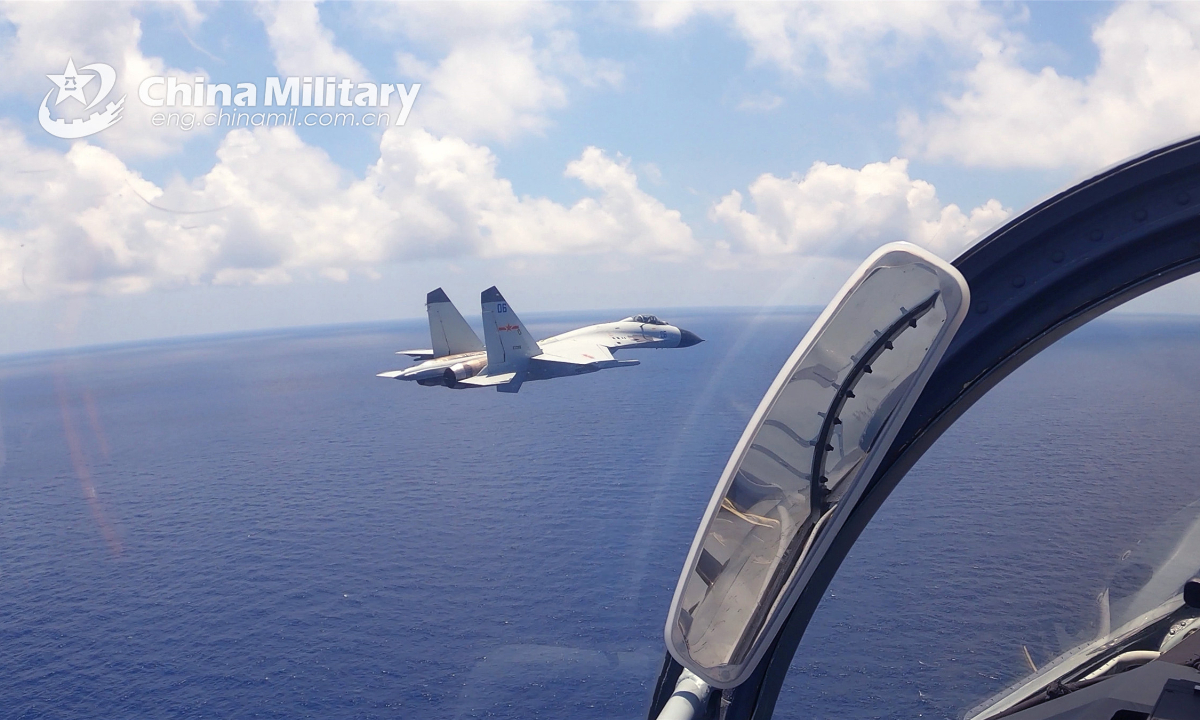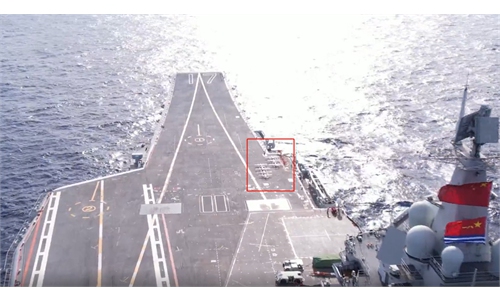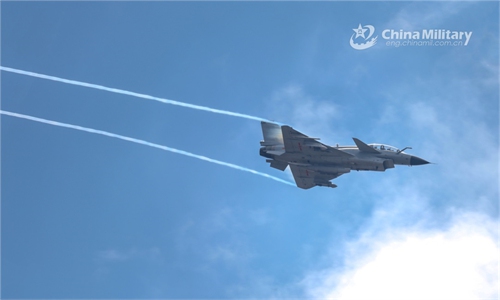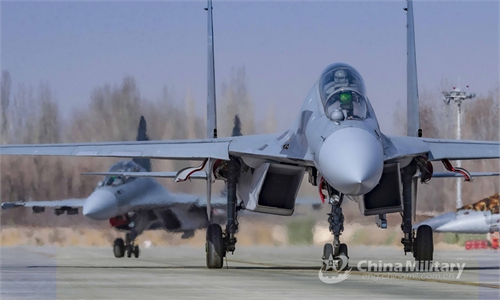US rallies Canada, Australia for close-in recon on China; 'PLA could do similar to them' as countermeasure

Fighter jets attached to a naval aviation brigade fly in formation during a round-the-clock flight training exercise on April 26, 2022. Photo:China Military
With the participation of Australia and Canada, the US-led Five Eyes alliance has conducted a new trick to provoke China and test the resolve of the People's Liberation Army (PLA) by carrying out aerial close-in reconnaissance near China, analysts said on Tuesday, with data showing dozens of such flights were conducted in the East China Sea and the South China Sea recently.
The recent Australian provocation was even more reckless than the US ones, and similar operations could take place more frequently and be participated by more of US allies, experts said, noting that the PLA will be prepared in terms of detecting them and warning them away with effective technical measures.
The PLA Southern Theater Command sent maritime and aerial forces to identify and warn away an Australian P-8A anti-submarine warfare aircraft, when it repeatedly approached Chinese airspace of the Xisha Islands for a close-in reconnaissance on May 26 despite repeated warnings from Chinese forces, Senior Colonel Tan Kefei, a spokesperson at China's Ministry of National Defense, said in a statement on Tuesday.
The Australian warplane severely threatened China's sovereign security, and the Chinese military's countermeasures were professional, safe, reasonable and legitimate, Tan said.
China urged Australia to stop such dangerous provocative moves at once and restrict the actions of its maritime and aerial forces, or it shall bear serious consequences, Tan said.
On Monday, Senior Colonel Wu Qian, spokesperson at China's Ministry of National Defense, said in a statement that recently, using the excuse of carrying out UN Security Council resolutions, Canadian military aircraft ramped up its close-in reconnaissance provocations on China, harming China's national security and putting personnel's safety at risk on both sides.
The Chinese military quickly took reasonable, powerful, safe and professional measures to deal with Canada's provocation and its unfriendly, unprofessional moves, and lodged solemn representations through diplomatic channels, Wu said.
The Canadian operations were carried out in the East China Sea, the Global Times learned.
It was rare to see Australian and Canadian military aircraft conducting close-in reconnaissance and make provocations on China at the same time, because such activities were mostly carried out by the US, a Chinese expert who tracks open-source flight data told the Global Times on Tuesday, requesting anonymity.
But Australian and Canadian aerial close-in reconnaissance activities have surged this year, the expert said.
Data has shown that from February 24 to March 11, Australian military aircraft have visited the East China Sea north of the island of Taiwan six times this year to conduct close-in reconnaissance activities; Canadian military aircraft, on the other hand, were approached on several occasions by PLA warplanes from April to May 26 during their so-called missions to carry out UN Security Council resolutions in the East China Sea, according to a Reuters report on Thursday.
This comes in addition to the US' frequent close-in reconnaissance operations near China. Last month, at least 41 large spy planes of the US military were sent to the South China Sea for such operations, plus other reconnaissance activities including those on the PLA Navy's Liaoning aircraft carrier group, according to a report by the South China Sea Strategic Situation Probing Initiative, a Beijing-based think tank, on Thursday.
It seems that the US is playing a new trick by rallying gangs to join it in weaving a close-in reconnaissance web on China, and the intelligence they have gathered could then be shared in the framework of the Five Eyes alliance, analysts said.
Those operations could gather intelligence on the details of the PLA's military deployments and drills. Australia and Canada could report their findings to the Pentagon, which is building an alliance of spies, taking advantage of all members' technical advantages to block and contain the Chinese military strategically, Wei Dongxu, a Beijing-based military expert, told the Global Times on Tuesday.
It is possible that more US allies, including Japan, could join the operation, Wei said.
The PLA must be prepared to deal with these threats by detecting and defending against them, Wei said.
With complete early warning systems, the PLA can track the spy planes and sortie fighter jets to warn them away if they approach sensitive areas, Wei said.
Unlike US pilots who are relatively more familiar with PLA countermeasures and do not cry like a baby when intercepted, Australia and Canada accused the PLA countermeasures of being unsafe, but only exposed their inexperience, as they acted like clowns by complaining first while being the real guilty ones, observers said.
If they insist on conducting close-in reconnaissance activities and making provocations on China, the PLA can send warships and warplanes near their countries, but only in international waters and airspace, giving them a taste of their own medicine, analysts said.




